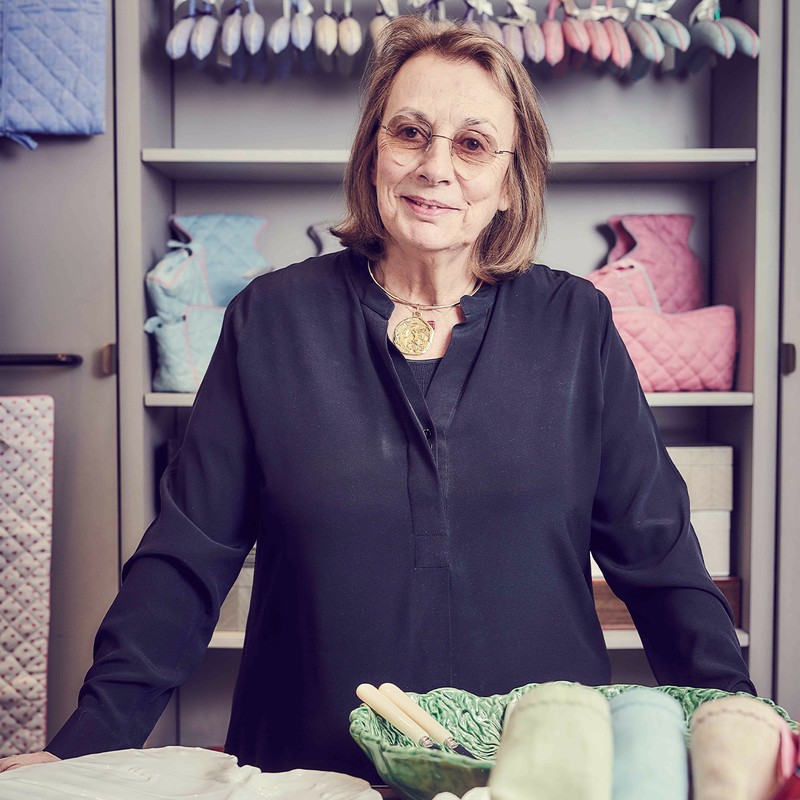
Chapters In My Life: Nina Campbell
Chapter One: My Childhood
“I was born the day after the Second World War ended – there were celebrations and dancing in the streets. My father was Scottish, my mother was from Vienna and she didn’t quite understand how to bring up children. Her idea of my nanny’s day off would be to take me shopping, and we went anywhere where there were shops – a favourite was the King’s Road, which of course was rather different in those days…you went to Peter Jones but not very far up, as it was considered quite dangerous.
“I was an only child but was never particularly worried by that. My holidays were always spent in Scotland with a great friend, which was just heaven. We went wild – we used to behave quite badly actually!
“My parents separated when I was in my teens, and my mother then married Sir Robert Mackenzie of Coull, who was the most wonderful stepfather. My father was always very much a part of my life. I had quite a sheltered upbringing and I wasn’t really conscious of him coming and going – I obviously knew they were separated but he was always there for me and came to events at school. He used to love clothes shopping with me – he had impeccable taste and would sit like a Pasha and say things like, ‘You can’t wear that, it doesn’t look right from the back.’ All the sales ladies fell in love with him because he was so attractive.
“My mother moved house quite a lot, always to somewhere in Belgravia, and we would go to Cole & Son in Mortimer Street for me to choose wallpaper for my bedroom. I loved all that and thinking about decorating. I remember many occasions in the middle of the night – well, it seemed like the middle of the night to me, but it was probably only about eight or nine in the evening – when we would suddenly be moving furniture around the drawing room and changing the way everything looked. We had the most wonderful Italian mother and son couple who looked after us – Danila would arrive in the morning and put everything back regardless of where we’d put it; and then we’d start again. He obviously didn’t think our changes were up to much!”
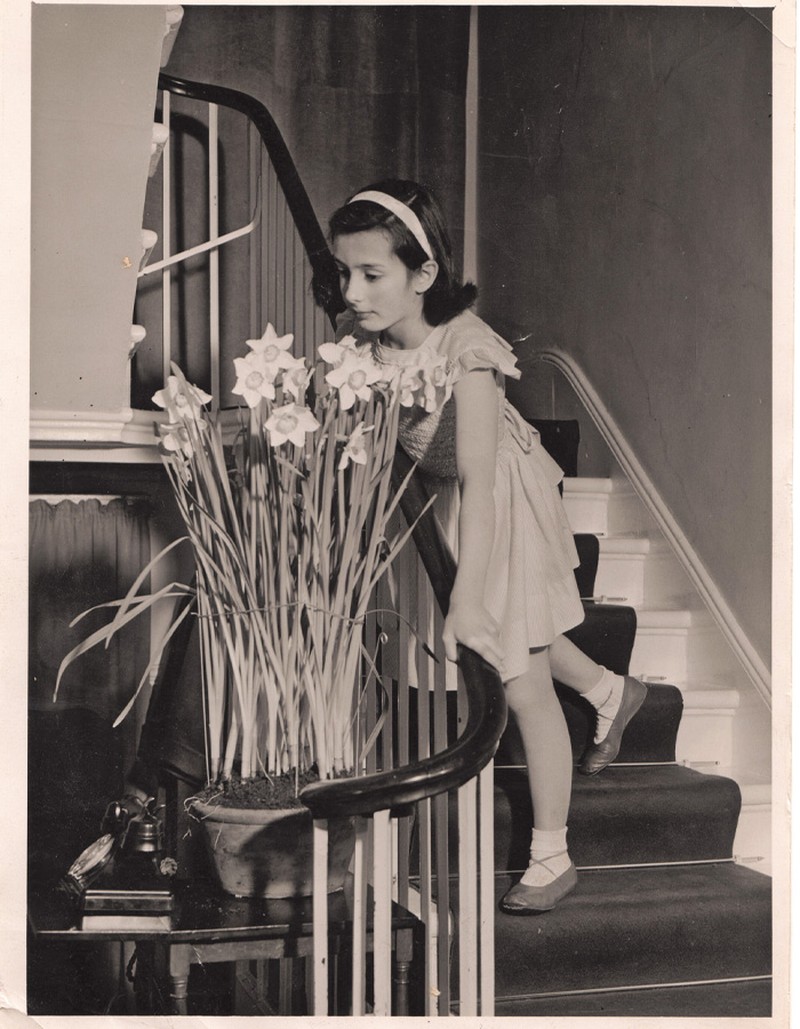
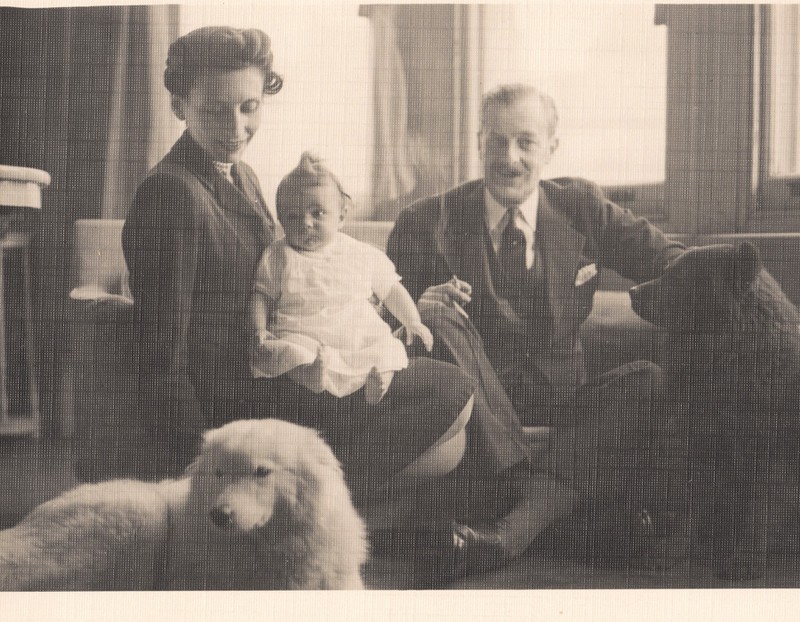
Chapter Two: School Days
“I first went to a wonderful PNEU school called Miss Lambert’s in Queens Gardens, Paddington; I still have friends from there. We learned things like history of art from the age of five. It was a very different sort of school and it had been slightly instigated at the turn of the century by my grandmother who didn’t understand why girls weren’t educated properly. Her idea was to gather together a group of governesses, so that instead of a family having one governess who probably knew not much about anything worth teaching the children, she’d get five friends and would tell one to get a governess who could teach French, she’d tell another to take a German woman, someone else a Geography woman and so on – that way you had five specialists teaching your children, and that was the beginning of the Parents National Education Union.
“I then boarded at Heathfield School in Ascot until I was 16, after which I went to Paris to learn French and study history of art. I lived with a lovely family and was taught by the governess of a French friend who had been at Heathfield with me. She was the archetypal classic French lady, and just magical, just like the Old Lady in Babar.”

Chapter Three: My First Job
“After Paris, I returned to London and was one of the first group of pupils to attend the Inchbald School of Design. I also did a short architecture course there and, as a result, to this day I love space planning and cleaning our spaces. I then got my first job at the General Trading Company where I did the wedding lists. I would arrange for all these brides-to-be who were much older than me but knew nothing about china, glass, or laying tables to come into the store, and I would take them to each department to help them choose what they needed. That is absolutely what I adored to do. In fact, the thread of my life has been tables – I’ve always loved glass and china and beautiful tables. I think it is to do with the fact that I’m not a very good cook, so I like to blindside my guests with my table settings. Then they don’t notice what they’re eating!
“In those days you didn’t get very much holiday, just two weeks, so when I was invited by one of my best friends to go to Jamaica where her parents had a house, I decided to leave my job and took a month off. I also visited my grandmother who lived in America. “
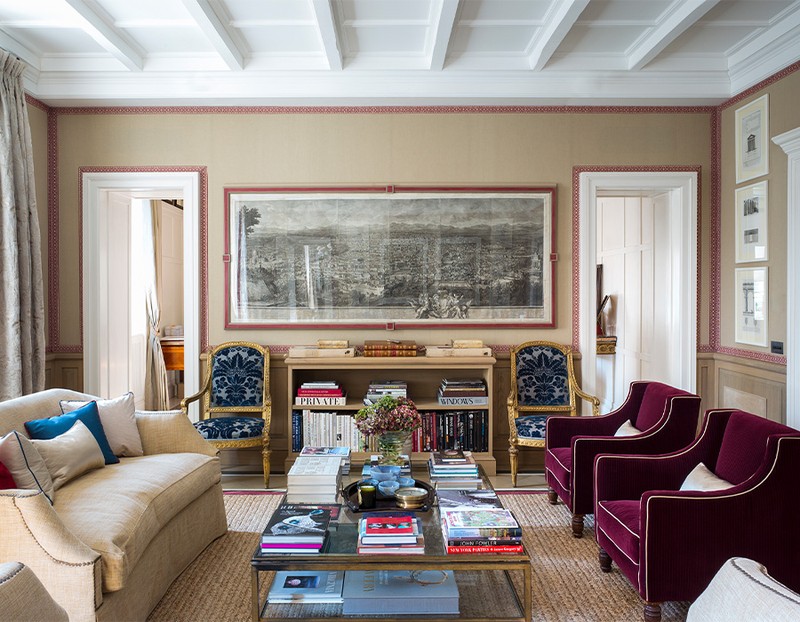
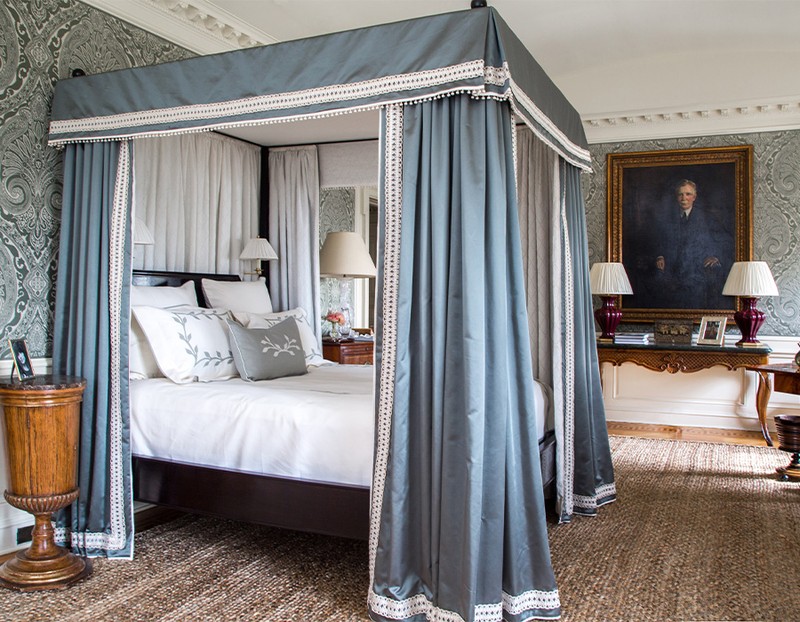
Chapter Four: Working For John Fowler
“When I got back, I was lucky enough to get taken on as Imogen Taylor’s assistant at Sibyl Colefax & John Fowler. She was the principal decorator and, at just 19, I was the most lowly person there; I wasn’t even there to fold fabric and was actually taken on to make the tea. However, I was bad at that as I’d never made tea in my life – being Austrian, my mother drank coffee, so I didn’t know anything about tea. I recall making a disgusting cup of tea for John Fowler and he begged me never to make it again. So that was quite good, and I rose up the ranks to bag carrier!
“John Fowler was quite scary, particularly if you weren’t very old and didn’t know what you were doing. I remember him coming into my room one day and saying: ‘Come along dear, we are going to the Clermont Club.’ Off we set with me carrying the bags; he had absolutely no regard for traffic and would cross roads without looking. Colefax & Fowler was in Brook Street and the Clermont was in Berkeley Square, and he literally walked there as the crow flies, with me behind. We got to the club and I knew rather a lot of the people who were sitting around gambling all day. They were all my friends and were quite surprised to see me. But they all adored John, as he’d made this incredible and beautiful place for them to go, so immediately they offered us champagne. Needless to say, we didn’t do much choosing that day, but John rather liked the fact that I was part of this whole scene. Clubs like that used to close for the whole of August when they would be cleaned from top to bottom and also redecorated – hence us being there.
“John was just the most wonderful person to work for because once he realised you were interested, he talked to you and taught you the most extraordinary things. We went to the Italian Embassy in Grosvenor Square one day and he said to me, ‘Let’s sit here and play ladies’ (as he called it). He talked to me about the tapestries and why he was going to choose a particular colour to paint the walls so it would show the tapestries in a much better light than the boring old magnolia colour they were sitting on. He used what he called ‘tapestry green’ and I think it’s still there…it was when I went back there many years later. It was beautiful. I was very lucky to know him and learn so much from him.
“He was such a lovely man, too. On one occasion, I was invited to a 21st ball at Chatsworth and, as it was being held on a Friday night, I asked him if I could leave a bit early. I explained that I was going to a party miles away in the country and had to get there. He asked where it was, and I told him. He said: ‘My dear child, you must leave on Thursday.’ There really wasn’t any need, I replied, as I wasn’t going on a donkey and was planning to take the train! He then instructed me not mess around with any of those ‘silly boyfriends’, and instead said I should spend my time looking at Chatsworth’s art and furniture. He was much more interested in what I was going to learn at the party, and I was to report back on every detail on the Monday when I got back to the office.
“I worked at Colefax & Fowler for about three years and had started to do a bit of work on my own. My stepfather had a friend who had a beautiful house who asked me to do it up. I was also beginning to do some work at Annabel’s and, sadly, I thought I would be better off leaving – which I did with John’s blessing, which was so nice.”
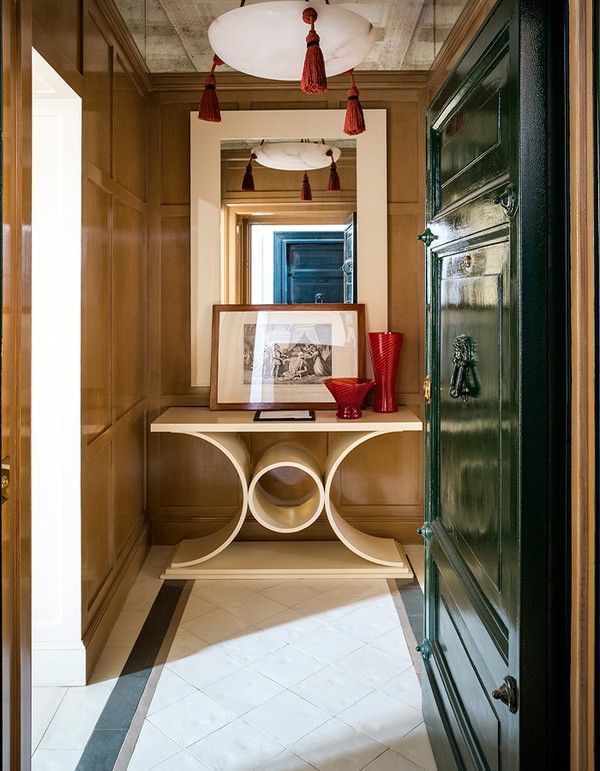
Chapter Five: The First Shop
“It was the mid 60s and I was going to Annabel’s, which had opened in 1963, every night. Mark Birley was a great friend of my half-brother and when I met him, I told him I thought the two vitrines he had either side of the bar were rather seedy and ugly. I don’t know what possessed me, I must have been emboldened by the bravery of youth, but I didn’t think he should be selling jewellery, like a hotel. He responded: ‘If you think you’re so clever, then come and do them yourself.’ I was literally there two days later with my sample book. He liked what I did and as a result I got my feet under the table – it was the start of a long and wonderful working relationship.
“In 1970, Mark and I opened our shop together in Pimlico, called Campbell & Birley. I was getting rather bored of decorating and thought I’d just like to do Annabel’s and have a shop, which had been my dream since I was a child. Actually, when I was little, I wanted a sweet shop – I just loved the way the sweets which were stored in large jars got weighed and placed into paper bags which were then closed by twisting the top corners into little ears. I’ve always been a detail freak, I didn’t really care about the sweets, but I wanted the little bags with those ears, and I wanted to be the lady behind the counter! Mark and I decided to specialise in unashamed luxury – we went to see the Porthault family in Paris and sold their linens; to Fauchon and bought all those lovely jars of sweets – actually that wasn’t so successful as they got stuck at customs and the customs officers ate them all! We went to Limoges and bought masses of china, what I call breakfast-in-bed sets. We also sold lots of cushions. We stocked all those things that were terrific presents to take to people at weekends. We had a tartan sofa in the shop for dogs, and people would just come in and chat.
“Eventually, Mark realised he wasn’t really into cushions and fluff, it wasn’t his abiding interest and he wanted to go into wine. We sold Pimlico Road and I opened my first shop on my own in Walton Street in Knightsbridge.”
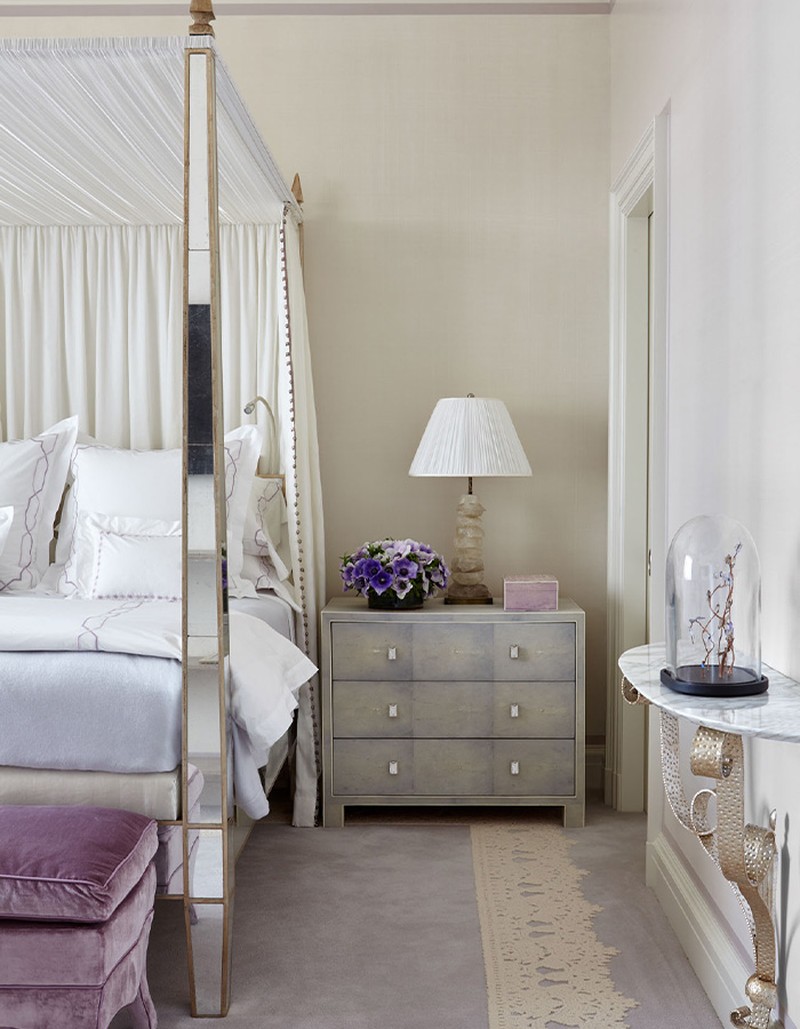
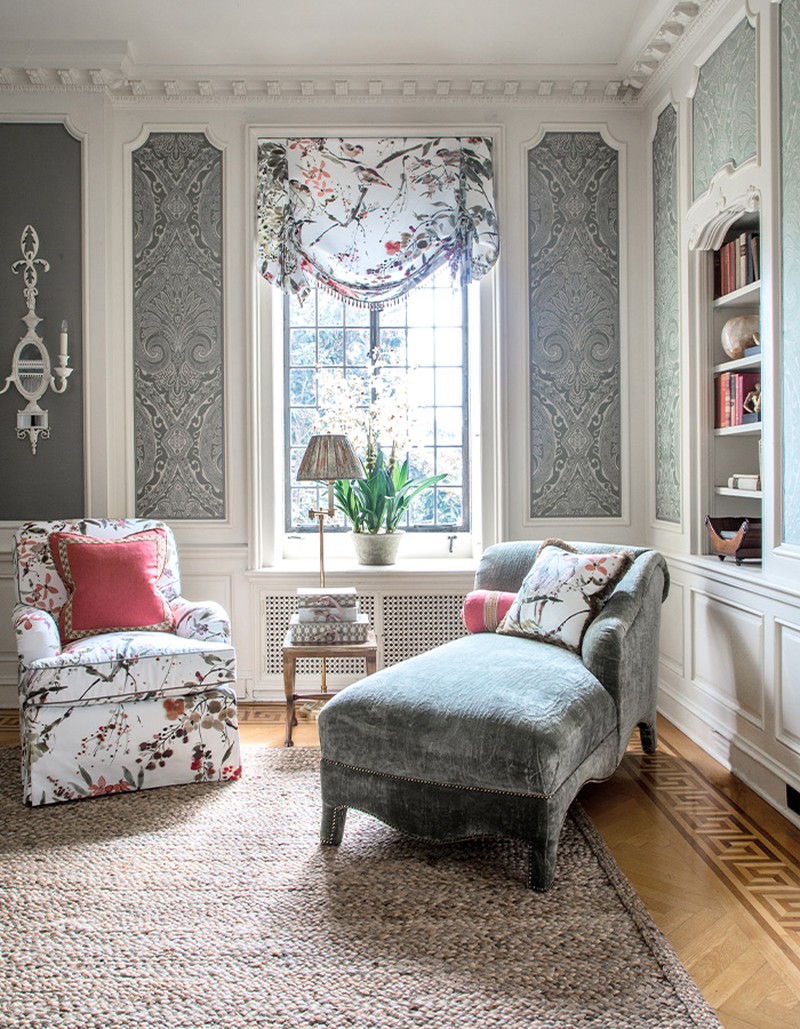
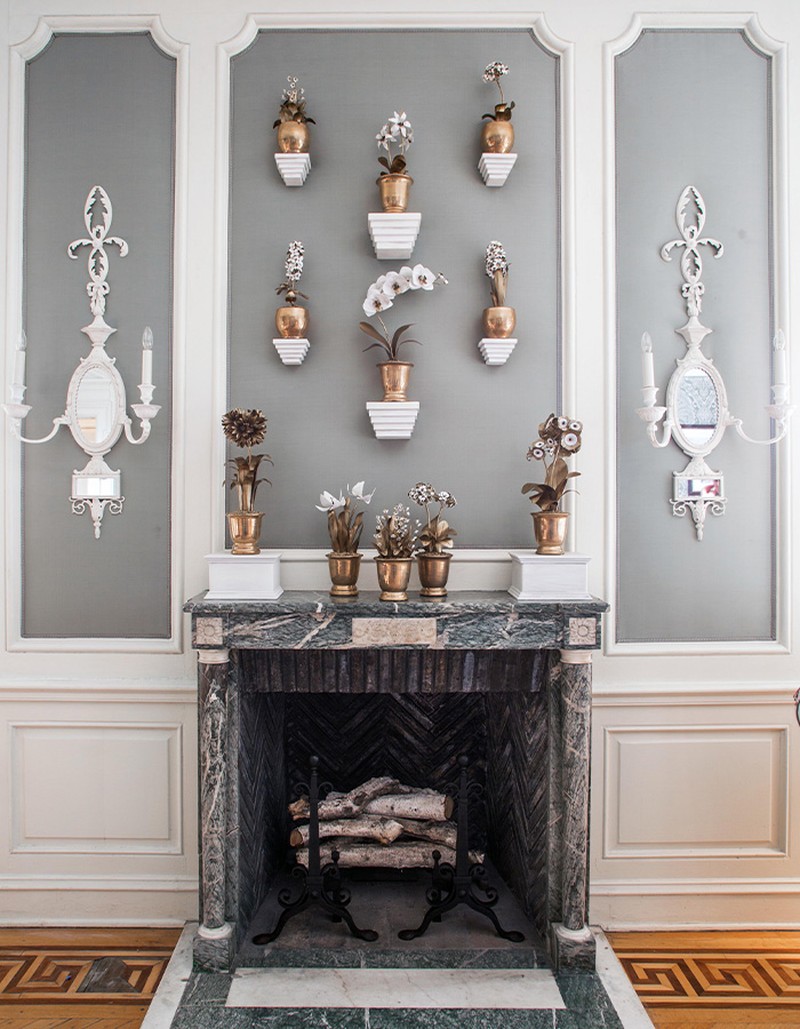
Chapter Six: Setting Up On My Own
“I got back into decorating slowly. It’s rather like a disease; someone comes along and it’s just too irresistible to turn down. One day, not long after I’d set up at 9 Walton Street, Anne Heseltine walked into my shop and said, ‘Would you come and do my house? I live at 30 Chapel Street.’ And it was extraordinary, because that was one of the many houses I’d lived in as a child, so I was intrigued. She was great fun to work for. The house had a room at the back built over the garden, which we had used as a party room, and Anne wanted to transform it into a Moroccan fantasy room with all the things she had bought on her travels. After that, I morphed back into decorating and more things came up, and slowly it turned into a business.
“It was on a trip to Scotland that I came across a piece of peeling paper on the wall of a lodge on a riverbank. I asked the owners if I could take it and that pattern became my Braulen fabric, which is one my most well-known, even today.
“Producing fabrics on my own was quite complicated, especially as I didn’t really know what I was doing. It was before digital, of course, so you had to cut the screens, print the fabrics and you had to have two to three hundred metres of each design; you had to stock it, cut a length off and send it to clients. Luckily, Henry Greenfield came to work with me; he’d been at Colefax and knew what he was doing which was a huge relief. He rather sensibly approached Osborne & Little to ask if we could store our fabrics with them in their big warehouses and the end result was that they wanted to license me and my fabrics – that is how the association started over 30 years ago in 1989 and continues to this day. In fact, we’ve just had a very successful launch in the middle of lockdown.
Chapter Seven: My Marriages And Children
“In 1970, I married Andrew Konig. We had two children – my daughter Henrietta (now Rita) who has her own very successful design business, and my son Max, who works for me. That marriage came to an end in 1978. I then met and married John Deen and had Alice, my youngest, who also works for me and looks after the shop and online. It was quite a complicated marriage, because he lived in Paris and I was in London; I used to go every other weekend, or he’d come back and forth, and we had a great time but it’s not a sustainable situation really, so that marriage ended too. What was nice is that I remained friends and on good terms with both of my ex-husbands.”

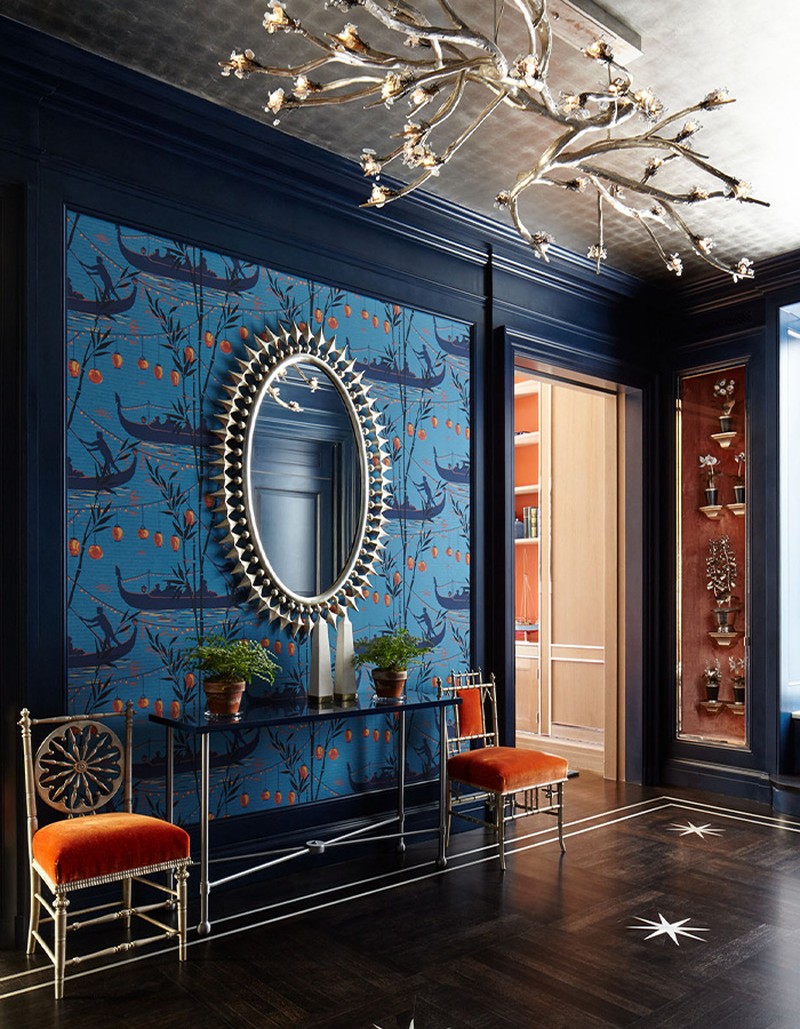
Chapter Eight: A Variety Of Clients
“As I discovered, everyone’s attitude to their homes is the same, and it doesn’t matter if you’re the Queen of Denmark, a celebrity, or just someone with a lovely house in the country. Everybody wants to be comfortable and to entertain and give other people a good time when they’re in their house. I’ve worked with some extraordinary people – yes, some very known and some very unknown. I did do Ringo Star’s house near Ascot, I did some work for Rod Stewart; and I was lucky to work for the Duke and Duchess of York and decorated Sunninghill Park for them. I got to know them well and Beatrice became my goddaughter.
“One wonderful client was Susan Crosland. She was an American journalist and novelist who lived in London for more than 50 years, and the widow of Labour politician and cabinet minister Anthony Crosland. She hadn’t made much money from her books but, after writing a bodice ripper, the cheques came in every week. She rang me and said she’d seen a chair of mine in a magazine and wanted me to do two like that for her – it started with the two chairs but as the money kept pouring through the letterbox, as a result of the hundreds of copies of her book she was selling, we ended up doing the entire flat. She was so charming, funny and lovely.
“There are all sorts of wonderful characters that come into my life doing what I do. I’ve worked in China for a man who bought a house in Sussex – Harold MacMillan’s house, Birch Grove – and he asked me to do it for him so that his English friends would feel at home. I then did his house in Hong Kong just before the handover. And then finally, he asked me to do his house in China proper – that was quite a difficult experience, you couldn’t get anything.
“I have worked all over the world – and am currently doing a house in Jordan. The Americans, in particular, are great fun to work for as they love everything down to the bed linens, and they get really into it all, every laundry bag, every hanger…I love that.
“I’ve also done the interiors of various boutique hotels like the Draycott in London, the Hotel de Vigny and the Hotel Parc Victor Hugo in Paris, also one in Lebanon. I love hotels – the sort of hotels I do are not big hotels. My approach, because I travel a lot, is to ask what do I want to find in my room, what do I want in the bathroom? There are so many hotels where you think how on earth did anyone design this, where you spend an hour looking for the light switch, or where there’s a wretched light in the corner which never seems to go off. You also want to know where you are when you wake up in the morning, you don’t want to be somewhere which could be any old where in the world.”
The Next Chapter
“This year we celebrate a huge milestone – 50 years. I don’t really consider what I do a job, it’s a lifestyle, and I’m lucky to have three parts to it: the interior design, the fabric design and the shop. So, if I ever get stuck on one bit, and can’t figure out what to do for a room, I’ll go and fiddle around in the shop and see what’s going on there. I probably get on everyone’s nerves, of course, rearranging the shelves. Then some magic thought comes to me…
“Lockdown has been hard – designing when you can’t go shopping is quite testing, as you are not able to put things together. All those antique shows where I normally go with my list of bits to buy, and where you can touch and feel everything, has not been possible. But I’ve got quite good at being online and have learnt who to trust so I don’t get sold something with a broken back leg.
“Looking forward, it certainly looks like I’ll be busy for quite a few years. I’m currently doing up a house which will be ready in 2023. I rather hope I’ll just go on until I drop. I’ve never not worked, I wouldn’t know what to do when I got up in the morning and worry I could become incredibly lazy.”
Visit NinaCampbell.com
DISCLAIMER: We endeavour to always credit the correct original source of every image we use. If you think a credit may be incorrect, please contact us at info@sheerluxe.com.

